Search ResultsFor "harryhausen"
Commentary 05 Jul 2008 08:33 am
more or less – 1
- Animation has completely done a big turnaround in the past 10 or so years. The medium has evolved so drastically into something else that I’ve come to feel that a lot of the past has become or is getting lost.
Yes, this is going to be one of my usual rants, but I think I have something that’s worth going on about. Maybe a good long conversation can start. I don’t really want to talk about how we got here, but I do want to talk about where we are.
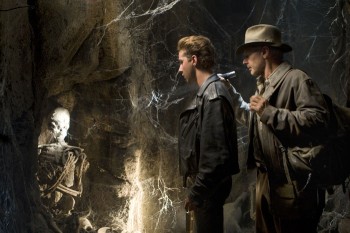 Live action movies aren’t live action anymore. Go to Indiana Jones 4 or Hancock or The Hulk or Journey to the Center of the Earth or most other fare at the local theater, and you maybe get the idea.
Live action movies aren’t live action anymore. Go to Indiana Jones 4 or Hancock or The Hulk or Journey to the Center of the Earth or most other fare at the local theater, and you maybe get the idea.
In 1979, the Museum of Modern Art had a special exhibit complete with chat and Q&A from Peter Ellenshaw.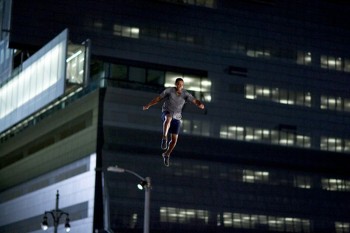
A lot of his matte paintings were displayed, and he talked in front of a projected screening of shots he worked on from many of the films. Mary Poppins, Treasure Island and Polyanna were discussed.
I was struck with how impressionist the paintings were up close, yet on screen they looked so absolutely real. I asked about this, and he said that he found that the paintings had to feel a bit ____________________What’s real?
out of focus to achieve the effect
of reality. When he painted in a very realistic mode, the paintings didn’t work.
His glass paintings, which were painted on glass, originally sat between the camera and the scene. They were designed to add to the background being filmed. Ships in a harbor were painted or a skyline was altered to more closely match the historic film being shot; these were painted on glass and matted out things in reality. These glass mattes eventually were just matted into the scenes optically, though Ellenshaw didn’t change his process.
The paintings were a bit more impressionist than the reality on the screen, but since it was only about a third of the image, we bought it.
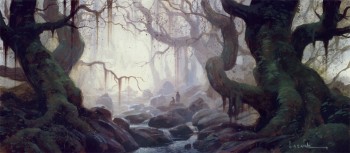 Today these paintings, of course, are painted on computer. Paul Lasaine beautifully details this process on his blog. The matte paintings have, in many films, superceded the reality being photographed. That “impressionism” has come to overwhelm the images we’re watching. When George Lucas talks about having his actors act against a blue screen with all the world being painted in by artists and animators, the film has become something else.
Today these paintings, of course, are painted on computer. Paul Lasaine beautifully details this process on his blog. The matte paintings have, in many films, superceded the reality being photographed. That “impressionism” has come to overwhelm the images we’re watching. When George Lucas talks about having his actors act against a blue screen with all the world being painted in by artists and animators, the film has become something else.
You can see this in the Indiana Jones films. The first had a tactile approach to the effects and the world of Indy. It DID resemble the cheap “B” movie serials it was imitating. Indiana Jones 4 completely lost that with this painted world. There are scenes where the actors are so obviously not in a real world on a real set. They’re acting against a blue screen. The scene in the grave of the aliens, where the 13 skeletons sit above them, is so obviously painted. The actors have no connection to humans in a cave or a grave; they’re not. It’s completely fake and feels it. This is one of the problems with the entire film. There’s no reality; nothing we can touch.
Every film, from Adam Sandler’s Zohan to Get Smart depends too much on the computer and robs the films of interacting humans on screen. They’re not in reality; we can’t buy or accept or understand their situations?
The Harryhausen effects were not real, but the tactile nature of his puppets allowed us, at least, to feel them. To know that something REAL was on the screen. Compare the original Yoda, the Frank Oz voiced puppet, with the digital thing of later films. One felt real, and it wasn’t the digital version of the character. Life for Lucas was made easier, a new animated world opened to him, but the experience for filmgoers was diminished. There was no there there. The real effects of the earlier film allowed us to stay in the film; the fake effects of the new film doesn’t even allow the actors in.
The computer has also changed animation. Obviously, when you have those 13 skeletons animated by computer in Indiana Jones 4, or any of the Harry Potter films or The Hulk,
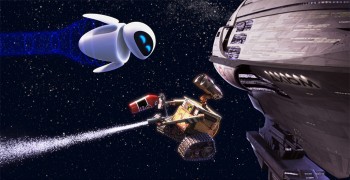 and when that looks not too different from the animation from the latest Pixar film, what is the difference? Wall-E‘s reality had nothing to do with me. It was a robot/compacter and another egg shaped robot (that I had even less connection to) interacting. I never entered the film; it had no relation to my life. I watched filmmaking choices, scene cuts and storytelling. I caught all the obvious and pedestrian biblical references, all the intended “depth,” and felt the film go completely haywire once it left what was supposed to be earth. (Why didn’t they just stay on earth and let all the fat humans come to Wall-E so that we could watch them try to rebuild? This is the real story isn’t it? Not the running back and forth throughout the spaceship.)
and when that looks not too different from the animation from the latest Pixar film, what is the difference? Wall-E‘s reality had nothing to do with me. It was a robot/compacter and another egg shaped robot (that I had even less connection to) interacting. I never entered the film; it had no relation to my life. I watched filmmaking choices, scene cuts and storytelling. I caught all the obvious and pedestrian biblical references, all the intended “depth,” and felt the film go completely haywire once it left what was supposed to be earth. (Why didn’t they just stay on earth and let all the fat humans come to Wall-E so that we could watch them try to rebuild? This is the real story isn’t it? Not the running back and forth throughout the spaceship.)
The film felt too connected to all the other films I see on the screen these days, films that I cannot connect to. This is pretty much all I feel for most other computer animated films.
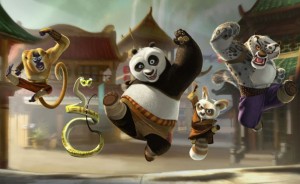 Kung Fu Panda is filled with beautifully drawn and painted backgrounds, much more pleasing than Wall-E. But the little viewmaster-puppet-characters are constantly moving in clichéd poses and actions. (Does every scene have to end with the some character arching their eyebrows?) I know this is a parody of Kung Fu movies, but who cares? What does it have to do with REAL human experience?
Kung Fu Panda is filled with beautifully drawn and painted backgrounds, much more pleasing than Wall-E. But the little viewmaster-puppet-characters are constantly moving in clichéd poses and actions. (Does every scene have to end with the some character arching their eyebrows?) I know this is a parody of Kung Fu movies, but who cares? What does it have to do with REAL human experience?
I also feel that every character moves identically to others. Tex Avery gave us snap animation, and Bob Clampett gave us blurred positions from A to B, but that doesn’t mean every film and every character has to imitate this. (I saw one page on Cartoon Brew from Eric Goldberg‘s new book Crash Course in Animation. It advises young animators to use this blurring technique! Not good advice in my mind. I’ll have to see the book to decide if that’s the norm.)
I haven’t seen Horton yet, but at least that LOOKS different than other computer animated films. The Jim Carrey voice over kept me away, but I’ll watch it eventually. I like some of Blue Sky’s work and still hope for the best.
To be concluded tomorrow.
Books &Puppet Animation &Trnka 29 May 2007 08:05 am
3D Puppet Book Corner
I’ve written about a lot of books on 2D animation, but I also love 3D puppet animation and have a small collection of books on the subject.
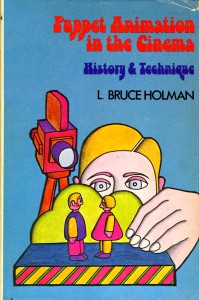 – Bruce L. Holman’s book, Puppet Animation in the Cinema: History and Technique was originally published in 1975 and can only be located today in old book bins (meaning Amazon or ebay). It’s a real primer on the medium, and when it was published was the only one of its kind.
– Bruce L. Holman’s book, Puppet Animation in the Cinema: History and Technique was originally published in 1975 and can only be located today in old book bins (meaning Amazon or ebay). It’s a real primer on the medium, and when it was published was the only one of its kind.
The book does exactly what its title says, it gives a history of the form and tells how the films are made. There are photos of a lot of European puppetmakers and stills from their films. I think David Allen is the only important American who makes it into the book. But then, at the time, that’s pretty much what the landscape described. Loving Jiri Trnka, as I do, I was quite pleased to see quite a bit of space devoted to him, and, of course, that’s as it should have been at the time.
The book stood on its own for quite some time, and those of us who love puppet films loved this book.
_____________
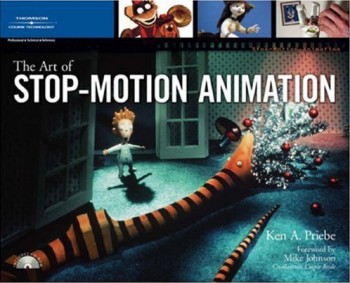 – Another book that you CAN get your hands on is Ken Priebe‘s The Art of Stop-Motion Animation. It brings things more current clearly explaining how puppet films are made, how to construct puppets of your own and how to make films of these puppets. There’s also a chapter on the history of the medium.
– Another book that you CAN get your hands on is Ken Priebe‘s The Art of Stop-Motion Animation. It brings things more current clearly explaining how puppet films are made, how to construct puppets of your own and how to make films of these puppets. There’s also a chapter on the history of the medium.
It’s a real nuts-and-bolts book that gives a clear demonstration of the process and a commendable how-to approach.
It’s obvious that Priebe loves puppetry and invests that love in the writing. This is a good book for anyone thinking of trying the medium and/or making a living of it.
_____________
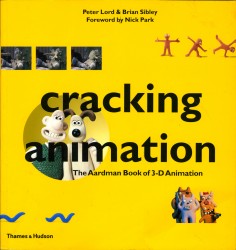 – Because the market for this medium is slim, there are a number of excellent books about the medium which exist to promote filmmakers. One such book is Cracking Animation by Peter Lord and Brian Sibley; it’s the story of Aardman and the making of their 3D animation. It’s amazing how many animation books Sibley has been connected to.
– Because the market for this medium is slim, there are a number of excellent books about the medium which exist to promote filmmakers. One such book is Cracking Animation by Peter Lord and Brian Sibley; it’s the story of Aardman and the making of their 3D animation. It’s amazing how many animation books Sibley has been connected to.
The book goes into nice depth in illustrating the history of 3D animation and moves from there to show how the Aardman puppet films are made. Nice illustrations show all of the phases with lots of stills of armatures, walk cycles, sets and animators. It’s a solid book with a lot of information. I believe later editions of the book have been updated to feature more recent films.
Of course, it’s Aardman-centric, but that’s not such a bad thing.
_____________
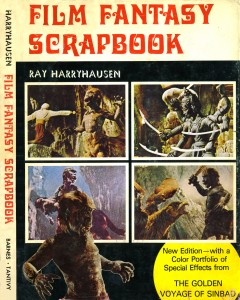 – Another book that puts its focus on one individual is this Film Fantasy Scrapbook by Ray Harryhausen.
– Another book that puts its focus on one individual is this Film Fantasy Scrapbook by Ray Harryhausen.
Of course, Harryhausen is the “auteur” who created all those stop motion monsters and sci-fantasy films. (Anyone who has seen Jason and the Argonauts can only remember those incredible fighting skeletons.) This book is literally a scrapbook of stills and posters and illustrations showing off Harryhausen’s career up to 1972, when the book was published.
It’s all in B&W and one wishes there were more back stage imagery as you see in the Aardman book. It’s really more of a “fanzine” type book, but if you’re at all a Harryhausen fan, you’d love owning the book.
Harryhausen has written a number of other books about his film work. I don’t own any, but The Art of Ray Harryhausen looks like it might be good. Unfortunately I was never a wildly enthusiastic fan of this type of special effects animation, so I haven’t gone wild over his books. The only reason I include this book here is that you can’t mention 3D animation without referencing Harryhausen.
_____________
- Finally, let me showcase the book The Corpse Bride: An Invitation to the Wedding by 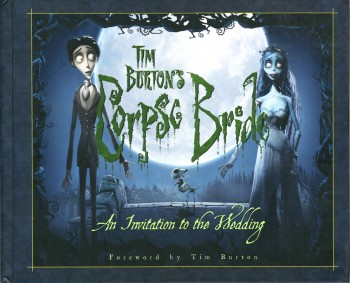 Mark Salisbury.
Mark Salisbury.
This is an out-and-out promotional book for the film. However, it really gives a state-of-the-art demo to show how studio puppet films are made. The book includes lots of backstage photos which go into detail about how certain scenes were created. This is a variant on the excellent book done to promote The Nightmare Before Christmas.
We’re shown how some scenes combined 3D puppets with 3D cgi (a technique all puppet animation films include these days.) The details of the odd digital photography are explained fully and illustrated in detail.
Considering the obvious devotion Tim Burton seems to have for 3D puppet animation, it’s worth watching closely. Having made Vincent, Nightmare Before Christmas, The Corpse Bride and, now in production, 9 Burton has become one of the most important advocates of the medium.
Animation Artifacts &Daily post 03 Nov 2006 08:52 am
Norstein & TCM features
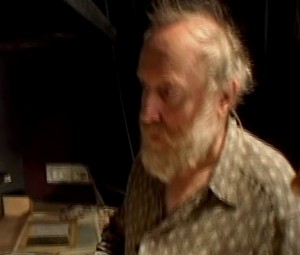 – For those who haven’t seen the Yuri Norstein segment from Winter Days, it has been posted by Daniel Thomas MacInnes at Conversations on Ghibli. Give yourself the two minutes to watch it.
– For those who haven’t seen the Yuri Norstein segment from Winter Days, it has been posted by Daniel Thomas MacInnes at Conversations on Ghibli. Give yourself the two minutes to watch it.
The piece, in a slightly longer version, is on YouTube as well.
There’s a small clip of this work on the Norstein dvd, but watch it in its entirety.
Daniel also posts several other beautiful segments from this amazing film by Kotabe & Okuyama and Takahata here.
- Turner Classic Movies is about to show a couple of animated features on their jam packed schedule for November.
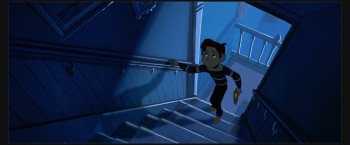 On November 12 at 8:30, they’re screening Brad Bird‘s feature, The Iron Giant. It’ll be nice to see a version of this without endless commercials on television. (Though the DVD release is excellent.)
On November 12 at 8:30, they’re screening Brad Bird‘s feature, The Iron Giant. It’ll be nice to see a version of this without endless commercials on television. (Though the DVD release is excellent.)
On November 12 at 10:00 pm, they’re showing Grave of the Fireflies. For information about this film, I, once again, suggest you go to Conversations on Ghibli.
On November 12 at midnight, Lotte Reineger‘s The Adventures of Prince Achmed will screen. This is the first animated feature, a silent film made in 1927, and if you haven’t seen it at least once, watch it, tivo it or tape it.
Look out for November 12th.
- TCM also continues with the Cartoon Alley series on Saturdays:
Nov 4th at 11:30 AM: Features three Tex Avery George and Junior Cartoons:
Henpecked Hoboes (1946), Hound Hunters (1947) and Half-Pint Pygmy (1948).
Nov 11th at 11:30 AM: Features three WB Bugs Bunny Cartoons:
A Wild Hare (1940), Elmer’s Pet Rabbit (1941) and Hiawatha’s Rabbit Hunt (1941).
Nov 18th at 11:30 AM:: Features three MGM Spike Cartoons:
Counterfeit Cat (1949), Ventriloquist Cat (1950) and Garden Gopher (1950).
(This is repeated Tuesday Nov. 21st at 6AM.)
Nov 25th at 11:30 AM: Features three WB Bugs Bunny/Cecil Turtle Cartoons:
Tortoise Beats Hare (1941), Tortoise Wins By a Hare (1943) and Rabbit Transit (1947).
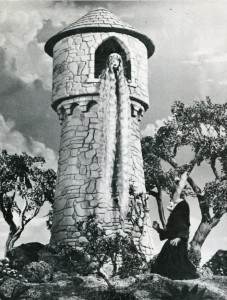 – On Nov 24th, the day after Thanksgiving, Ray Harryhausen is featured. TCM is going to air a number of his fantasy features.
– On Nov 24th, the day after Thanksgiving, Ray Harryhausen is featured. TCM is going to air a number of his fantasy features.
8:00 PM 7th Voyage Of Sinbad, The (1958)
10:00 PM Jason And The Argonauts (1963)
12:00 AM Mysterious Island (1961)
However, the real treat will be the shorts sandwiched in between these features. Harryhausen did a number of fairy tale films that are rarely seen and will certainly be the highlight for the night.
This will be a television premiere that seems to be going unnoticed. Again, get out your Tivos (or in my case tape.)
These can be seen at:
9:45 PM RAPUNZEL (1951)
1:45 AM KING MIDAS (1953)
Flushed Away has opened today. With it there are the reviews. In NYC you get strikingly contrasting views. The NYTimes’ A.O. Scott gives it a glowing review (“…it strikes me as unlikely that any British action picture released this year will surpass “Flushed Away.â€). The NYDaily News’ Jack Matthews is so-so over it. 2½ stars.
I hope Dreamworks makes a bundle and realizes they’ve lost future work with Aardman, an honest and respectable animation studio working with dignity in a world of muck.
